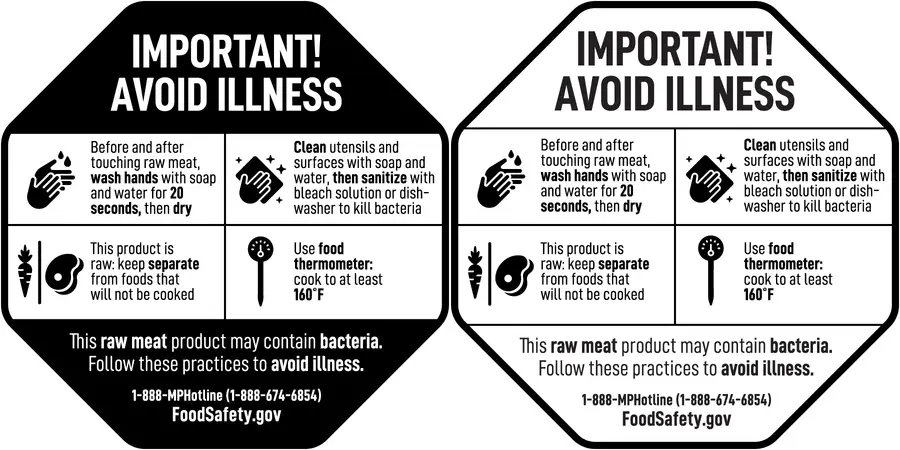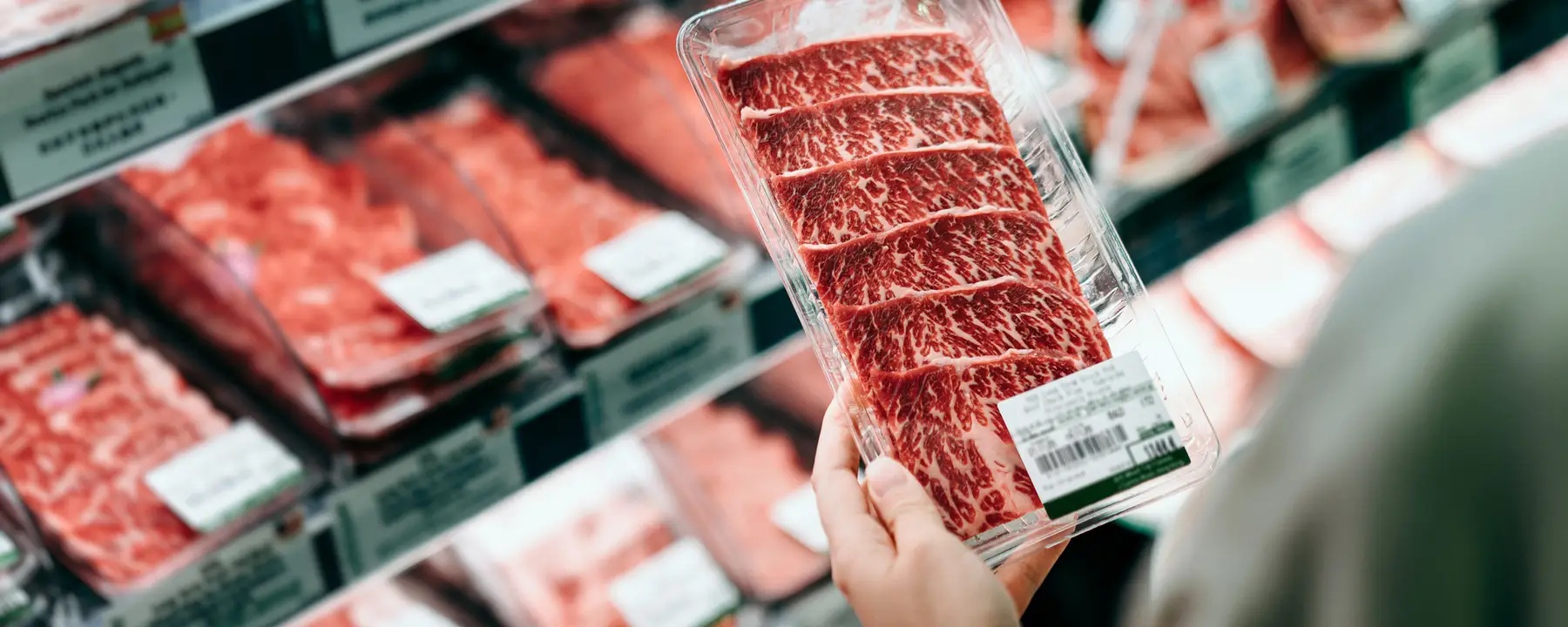Understanding consumers’ response to potential new designs for the Safe Handling Instructions label on raw meat and poultry products for the USDA Food Safety and Inspection Service
Objective
To determine whether potential new designs for the Safe Handling Instructions (SHI) label would perform better than the current SHI label at capturing consumers’ attention, changing food safety risk perceptions, and motivating consumers to follow the recommended instructions to help reduce foodborne illness.
Approach
We conducted consumer focus groups and in-depth interviews to obtain feedback on potential new designs for the SHI label, including label format and messaging. Based on the feedback, we created nine unique labels and conducted a randomized trial via a national web-based survey to assess the effectiveness of the nine test labels relative to the current SHI label.
Impact
We found that two out of nine labels performed better than the current SHI label. The U.S. Department of Agriculture, Food Safety and Inspection Service (USDA, FSIS) can use these results to inform potential revisions to the current SHI label.
Food Safety Labels used to Inform Consumers about Foodborne Illness Prevention
The Centers for Disease Control and Prevention (CDC) estimates that there are about 9.9 million cases of foodborne illness annually in the United States. These illnesses result in about 53,300 hospitalizations and over 900 deaths each year. As a public health agency, the U.S. Department of Agriculture (USDA) Food Safety and Inspection Services (FSIS) implements policies and programs to help with foodborne illness prevention. To communicate food safety information to the public, FSIS uses several channels, such as outreach, education events, campaigns, and food safety labels.
In 1994, the FSIS created the Safe Handling Instructions (SHI) label that is now required on all partially cooked or raw meat and poultry products to inform consumers about recommended safe handling practices. Since its implementation, the SHI label has not been changed.
In 2013, the FSIS sought guidance from academia, industry and consumer stakeholders, and submitted their suggestions to the National Advisory Committee on Meat and Poultry Inspection (NACMPI) for review. The NACMPI Subcommittee on Food Handling Labels recommended that the FSIS pursue changes in the existing SHI label and conduct consumer research to determine the effectiveness of any revisions to the SHI label, such as including information on thermometer use and recommended internal temperatures for different meat and poultry products.
Since that time, consumer advocacy groups have continued to call for updates to the SHI label to better inform consumers about steps they can take to help prevent foodborne illness when cooking raw meat and poultry.
Redesigning the Safe Handling Instructions Label on Raw Meat and Poultry
RTI worked with FSIS in partnership with researchers at the North Carolina State University and an external creative designer, to create and evaluate potential new designs for the SHI label. We used an iterative approach to engage consumers, food safety and communication experts, and other stakeholders.
We initially conducted a literature review and listening sessions to inform food safety label design. The literature review identified the best practices for label design and formatting to capture attention, facilitate comprehension, change consumer risk perceptions, and motivate behavior change. The listening sessions with stakeholders, including consumer groups, industry, and food safety and communication experts, provided useful information on considerations for label design and messaging. Informed by this initial research, our creative designer created several potential new food safety label designs. We tested the label designs in focus groups and in-depth interviews with a diverse population of consumers, including those with limited cooking experience and caretakers of people with an increased risks of contracting a foodborne illness.
Based on this consumer input, our creative designer created nine potential food safety label designs that varied in terms of their shape, layout, messaging, and other features. Using a randomized trial via a national web-based survey, we tested the effectiveness of the new labels compared to the current SHI label. We measured saliency or noticeability of the labels, which was tested with a limited time exposure approach. Additionally, we measured visual receptivity, comprehension, efficacy, new information learned, perceived risk, and motivation.
Survey Respondents Respond Favorably to Potential New Designs for Safe Handling Instructions Label

Out of the nine food safety labels, the two shown above performed better than the current SHI label. The label’s stop-sign shape appeared to grab the attention of survey respondents. While focus group participants voiced concerns with the label potentially causing fear, the survey findings suggest that respondents would not be concerned buying meat or poultry with SHI labels containing the words bacteria or illness.
Survey respondents also recommended the food safety label to appear on the front or back of the package but not the side (current regulations do not mandate the location of the label on the package). Some ideas for a potential new SHI label, like using a QR code, had mixed responses among survey respondents. Half of the respondents indicated that they would be somewhat or very unlikely to scan a QR code to receive additional information about safe handling instructions. The QR code would likely be underutilized by an older population compared to younger adults. Additionally, half of the survey respondents recommended providing the minimum internal temperature specific to the meat or poultry product on the front of the package.
A label that receives high interaction among consumers is crucial for informing the public on how to properly prepare raw meat and poultry and help prevent foodborne illness. FSIS can use this information to inform future decisions around the SHI label.
- Food Safety and Inspection Service (FSIS)
- North Carolina State University



